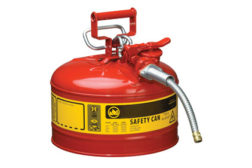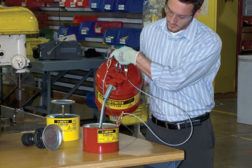Glen Carter
Glen Carter, chief technology officer, Justrite Manufacturing Company, is a recognized authority on flammable liquids storage and handling. He is currently on three UL standards committees and has served as a member of the NFPA 30 Technical Committee, Flammable and Combustible Liquids Code since 2008.
ARTICLES
What really makes a “Safety Can” safe?
What you don’t know might explode in your face
August 2, 2011
Never miss the latest news and trends driving the safety industry
eNewsletter | Website | eMagazine
JOIN TODAYCopyright ©2024. All Rights Reserved BNP Media.
Design, CMS, Hosting & Web Development :: ePublishing


